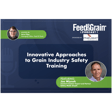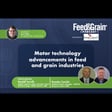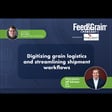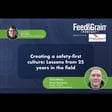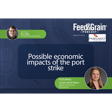Become a Creator today!Start creating today - Share your story with the world!
Start for free
00:00:00
00:00:01

Automating railcar loading for safety and efficiency
In the latest episode of the Feed Grain Podcast, host Steven Kilger talks to Tom Boehm president and CEO of Rayhawk. Rayhawk has design a system to completely automate the rail loading process at grain elevators. This means that no employees have to be on top of railcars improving safety, efficiency and hopefully the job satisfaction of your team.



